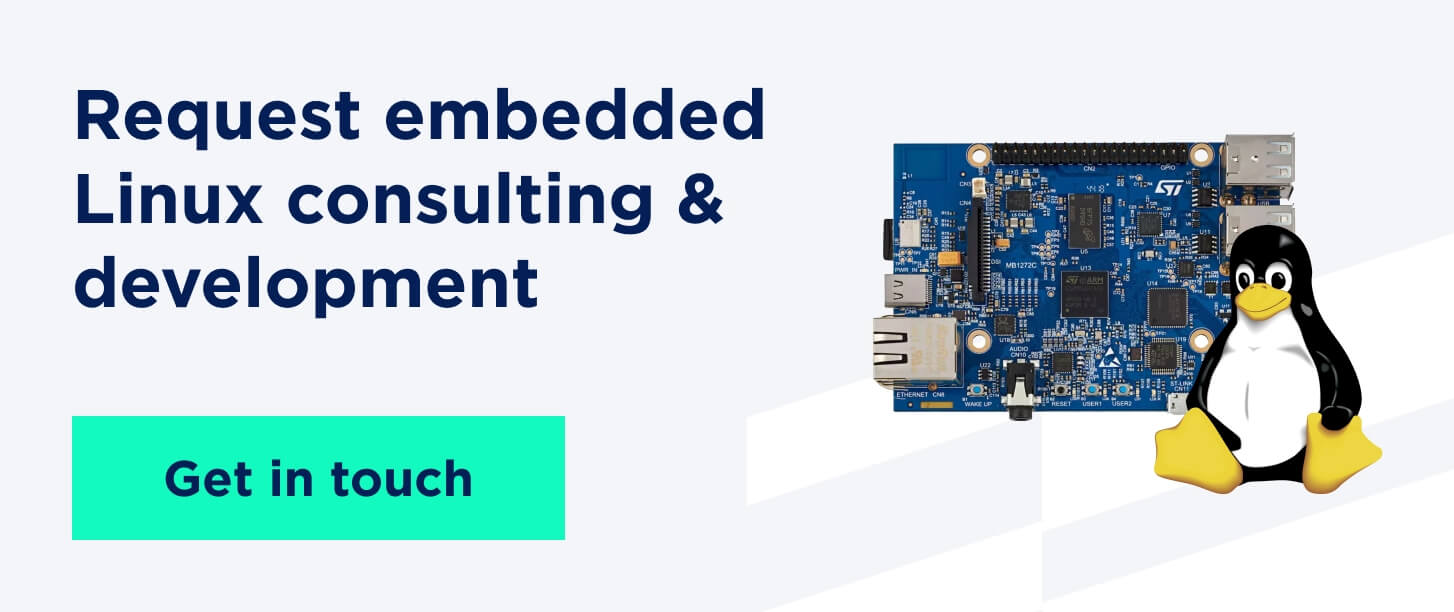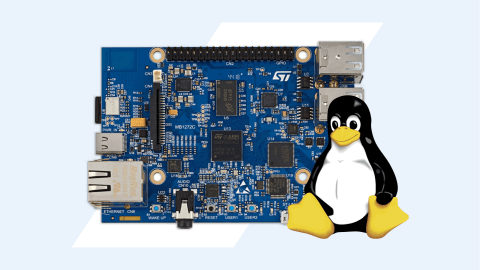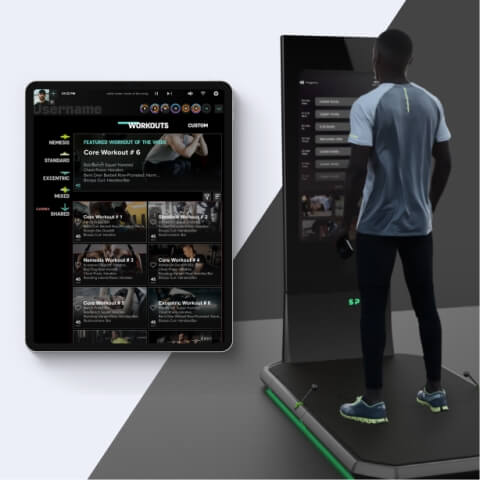Are you looking for a cross-platform GUI app development solution that will cut your development time and costs? If your answer is yes, consider Qt, a multi-platform framework with a strong tech knowledge base and a large community of enthusiasts. Qt software runs on Windows, Linux, Android, iOS, QNX, and other platforms, so you can code less while developing cross-platform solutions.

What does Qt mean?
Many business owners are now considering Qt for GUI development and use it as one of the core technologies for their software. Qt is a C++ framework that supports the WOCA (Write Once, Compile Anywhere) principle, which means Qt is a cross-platform framework. It’s mainly used to develop applications and graphical user interfaces (GUIs) that can run across different operating systems.
Developing software with native-looking GUIs is easy with Qt. Qt framework provides such collaboration tools as Qt Creator, Qt Quick, Qt Design Studio, and others. You can quickly build future-proof projects using Qt with fewer feedback loops and more efficient iterations.
There’s also a specific software development language for user interface-focused apps offered by Qt, which is called Qt Modeling Language (QML). It can be used with Java, Python, Go, PHP, Ruby, and other programming languages.
Qt components and their main functionality
Qt components simplify the creation of your applications and provide functionality for documentation, UI controls, network access, web content management, etc.
Qt components are QML types with defined interfaces that can be used inline within a single QML document. You can easily reuse a component within the QML file or define a component that logically should belong to other QML components.
Besides, apps can be built with versatile Qt framework add-ons like:
| Functionality | Description |
|---|---|
| XML | enables the generation of XML documents |
| Network | helps to connect your Qt code with SQL databases |
| SQL | includes functionality for playing and recording audio and video |
| Multimedia | sets communication with servers and helps to implement network protocols |
| Widgets | enable the creation of elements for user interfaces |
| Quicl layouts | allow engineers to arrange user interface items |
The described add-ons simplify the development of complex platform solutions. They also make Qt an advanced technology capable of fulfilling practically any of your business and technology objectives.
Where is Qt used?
Most often, the Qt framework is used for developing GUIs and cross-platform apps running on all major operating platforms like desktop OS, mobile OS, embedded systems, etc. That’s why choosing Qt for GUI development is a reasonable option for businesses that don’t want to invest in native solutions. GUI programs built with Qt have a native-looking interface and are often built in combination with other tech stacks.
Apart from using Qt for GUI development, you can also use it for multimedia, database management, networking, web content administration, 2D and 3D graphics creation, and more.
Let's review some of the most common Qt applications below:
Multimedia
Qt provides a rich set of multimedia components allowing developers to create multimedia-rich applications, including audio and video playback, recording, and streaming support. You can handle multimedia content with a Qt Multimedia module, which provides access to APIs, QML types, and C++ classes.
Database Access
Qt provides a comprehensive set of tools for accessing and managing databases, including support for SQL and NoSQL databases. You can use several driver plugins like SQLite, MySQL, DB2, Borland InterBase, Oracle, etc., available for Qt SQL for communication with database APIs.
Networking solutions
Qt provides a robust networking framework that allows developers to create networked applications, including support for TCP/IP, UDP, HTTP protocols, and WebSockets. You can build these applications with the help of APIs provided by the Qt Network module. C++ classes will help you run such operations as requests, cookies, and sending data over HTTP.
Web Content
Qt provides a WebKit-based framework that offers developers interfaces that support versatile web technologies, including HTML5, CSS, and JavaScript. To build web apps, you can combine C++, QML, HTML, and JavaScript code. Accessing versatile Qt APIs remotely is also possible using the Qt WebChannel.
2D and 3D graphics
Qt provides powerful tools for creating custom 2D and 3D graphics, including support for OpenGL, OpenVG, and SVG. To improve the performance of your graphics, you can opt for a specific API that fits your needs and requirements. Setting up the Qt’s rendering path with a particular API is a feasible option if you’re looking for custom solutions.
Advantages of using Qt
There’re several reasons why you should choose Qt development for GUI. Among these is the support of versatile development languages, including C++ and explicit UI language. However, before opting for the Qt framework, analyze your business and tech requirements to decide whether this framework is proper for you.
Below, we enlist some of the most widespread advantages of using Qt for your business. Check the list and figure out whether the Qt GUI framework is your choice.
1. Cross-platform solution
Qt enables you to create software that runs on different desktop/mobile environments and is compatible with all top desktop and mobile OSs like Linux, Windows, iOS, and Android. With Qt, you won’t have to spend extra time and finances building a separate native application for each OS. As a result, you’ll be able to cut the project delivery time and resources while reaching a wider audience.
2. Open-source
Qt uses commercial and open-source licenses to let you choose the most suitable option depending on your software development needs. Being an open-source framework, Qt enables engineers to share their original solutions and help developers extend their Qt expertise.
Overall, there’s a free license available for the basic use of the Qt framework. You can buy a commercial license and access advanced Qt versions if you need to build more complex functionalities.
3. Based on C++
C++ is the basis of the Qt framework. With Qt, you can fulfill solutions for various purposes, from GUI to complex embedded systems. Qt also has wrappers for other programming languages like Python, Java, Ruby, PHP, Go, etc.
4. Time-tested technology
Throughout its almost 30-year-long history, Qt has been refined by thousands of experts. As a result, the Qt toolkit now has extended features and functionalities for virtually any use.
5. A rich selection of tools
Several Qt tools like QML, QtGui, Qt Widgets, and QtUiTools help experts create intuitive UI/UX designs. With these tools, you can build adaptive user interfaces that work across versatile operating systems.
Disadvantages of using Qt
Apart from the multiple advantages of Qt, there’re still some aspects you should consider before choosing this framework for your project.
1. Complexity
Learning Qt (C++) might take a while, so hiring developers skilled in this technology is safer than teaching your in-house engineers. C++ is the basis of the Qt framework, meaning it’s a complex solution that is difficult to master. A lack of developers with a strong understanding of Qt technology might be an obstacle for business owners looking to build their GUI using Qt.
2. Codebase blocks
Lack of deep expertise in C++ on the market makes codebase maintenance more complicated. To avoid system failures, business owners often decide to keep the Qt codebase unchanged, accumulating legacy code, which causes software maintenance issues in the future.
3. Performance issues
The use of too complex templates is another common issue. Opting for templates that suit your system needs is crucial to prevent slow performance. Besides, Qt is cross-platform, which means it is slower than native platforms.
4. Memory management challenges
C++ programming language presupposes manual control of memory. Improper memory management leads to system failures and bugs, resulting in poor software performance. However, many memory management tools are available for C++ developers to cope with memory consumption properly.
Qt success stories
Several global players like Adobe Photoshop Elements, Google Earth, and TeamViewer were developed using the Qt framework. Qt is mainly used in multimedia, communication, file sharing, 3D graphics tools, games, and other scenarios. Let’s now look closer at real-case stories of Qt in use.
MBUX
MBUX is the new user experience built for Mercedes Benz cars using Qt. The Qt framework was utilized to create the UI experience and UI software, namely the screen animations, screen transitions, widgets, etc. Mercedes Benz benefited from the opportunity to prototype rapidly and develop cross-platform software using the Qt framework.
3D rendering software module
European Space Agency (ESA) used Qt to create a 3D rendering software module incorporated into the ESA MAPPS planning tool. The typical modeling approach wasn’t appropriate for rendering irregular comets. That’s why ESA chose a more sophisticated technology compatible with GPU hardware acceleration.
NxG Lighting tool
DreamWorks aimed for technology with an extensive feature set and a well-tested codebase. That’s why they picked the Qt framework for their NxG Lighting tool. Qt is a popular framework among animation studios and was an ideal choice based on the client’s needs. Qt enabled DreamWorks to extend its app functionality using the Qt API. Qt also helped DreamWorks update its legacy code with complex Qt widgets.
webOS
LG Group built webOS, a definitive operating system compatible with versatile OEM devices. Qt enabled LG Group to create a fast system with lower memory consumption. The Qt framework is highly customizable and suitable for systems that require limited memory space and quick performance.
Autodesk Maya
Walt Disney is a globally known studio creating impressive animations. They use Autodesk Maya, based on Qt, to create realistic and beautiful animations like Avatar and Transformers characters.
How Lemberg Solutions uses Qt for software development
Lemberg Solutions has experience in building solutions for our clients with the help of Qt technology. In particular, we used Qt to build a revolutionary sports training device and improved an app based on Qt and Embedded Linux for a Swedish bio-convergence startup.
CELLINK

CELLINK is a leading innovator in developing bioprinters who needed to extend their team with Embedded Linux/Qt engineers. In this project, we quickly onboarded engineers with the required skills and expertise, fixed the system's bugs, and refined the code. We also enabled a more convenient 3D modeling of organs by devising additional features.
Our client's core goal was to set up continuous support of their Qt applications, middleware, and firmware. Initially, the CELLINK team sent us a BIO X printer to ensure Lemberg Solutions’ Qt engineers could integrate all new features efficiently before production. For the specific BIO X printer model, we used QML.
Speede

Speede, an American startup that incorporates multiple training opportunities in one device, is one of our clients who requested us to build a training device prototype within short timeframes.
Besides other tasks, we had to build an application with a custom UI. For this, our Qt engineer created a Qt app with QML. This way, we met the client’s animations, design, and performance requirements. Our designer created custom dashboard designs for the application, including performance analytics, exercise sets, workout descriptions, charts, and a status bar.
AgriData Innovations

AgriData Innovations, a Dutch startup that builds data-driven engineering solutions for greenhouses, is one of our clients who wanted Lemberg Solutions to create a user-friendly interface for a device analyzing seed germination quality with a stereo camera and an algorithm.
After completing the design part of the project, we were ready to launch the development. Using Qt for Python, our engineer developed an app for the touchscreen. Next, we integrated it with the client’s computer vision algorithm and organized all the processes related to receiving and sending data retrieved from the camera.
EDS-Development

EDS-Development is a Ukrainian developer and manufacturer of innovative energy products. The company specializes in creating EV charging stations and conceptual architectural solutions for energy facilities, including electrical substations.
EDS-Development initially approached us to develop software for a double-sided human-machine interface (HMI) for the EDS Q360 charging station. To support custom UI, our Qt engineers developed the application using QML, which enabled us to deliver on the company’s expectations for responsive interactions, modern design, and high performance.
Develop your Qt interface with Lemberg Solutions
If you need a cross-platform framework enabling efficient collaborative work between designers and developers, Qt is an appropriate choice. At Lemberg Solutions, we combine deep expertise in the Qt framework with a proven track record in cross-platform development to help you bring high-performance applications to market faster. Whether you're building embedded systems, desktop software, or connected devices, our team is ready to support you at every stage — from architecture design to long-term maintenance.
If you have any questions about Qt framework development or embedded Linux services and want to discuss your business needs, drop us a line, and our experts will get back to you shortly.

FAQs
What is the Qt framework?
Qt is a cross-platform framework that is used for the development of GUIs and applications. It runs across operating systems like Linux, Windows, iOS, and Android. Qt enables simultaneous work within one framework using such tools as Qt Creator, Qt Quick, Qt Design Studio, and others.
What is the difference between Qt Widgets and Qt Quick?
Qt Quick is the standard library for building QML apps, while Qt Widgets provide the engine and language infrastructure. Qt Quick (QML) is a feasible option for building realistic animations declaratively. At the same time, Qt Widgets aren't good at scaling for animations.
How to use the Qt framework?
Usually, Qt is used for developing GUIs and cross-platform apps. This framework runs on different desktop operating systems and embedded devices. You can apply the Qt framework for multiple objectives, like multimedia, database access, networking solutions, web content, and 2D and 3D graphics.





